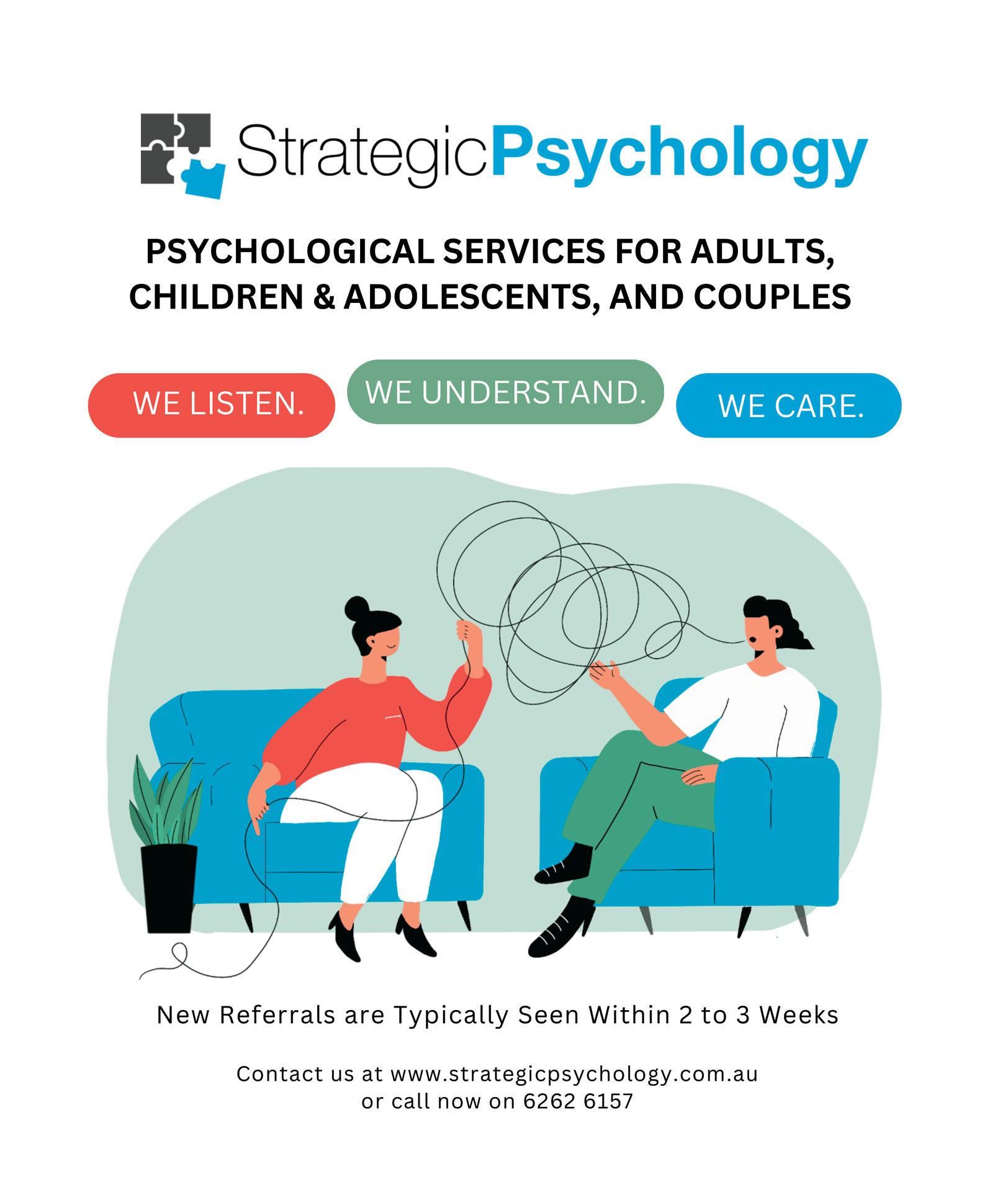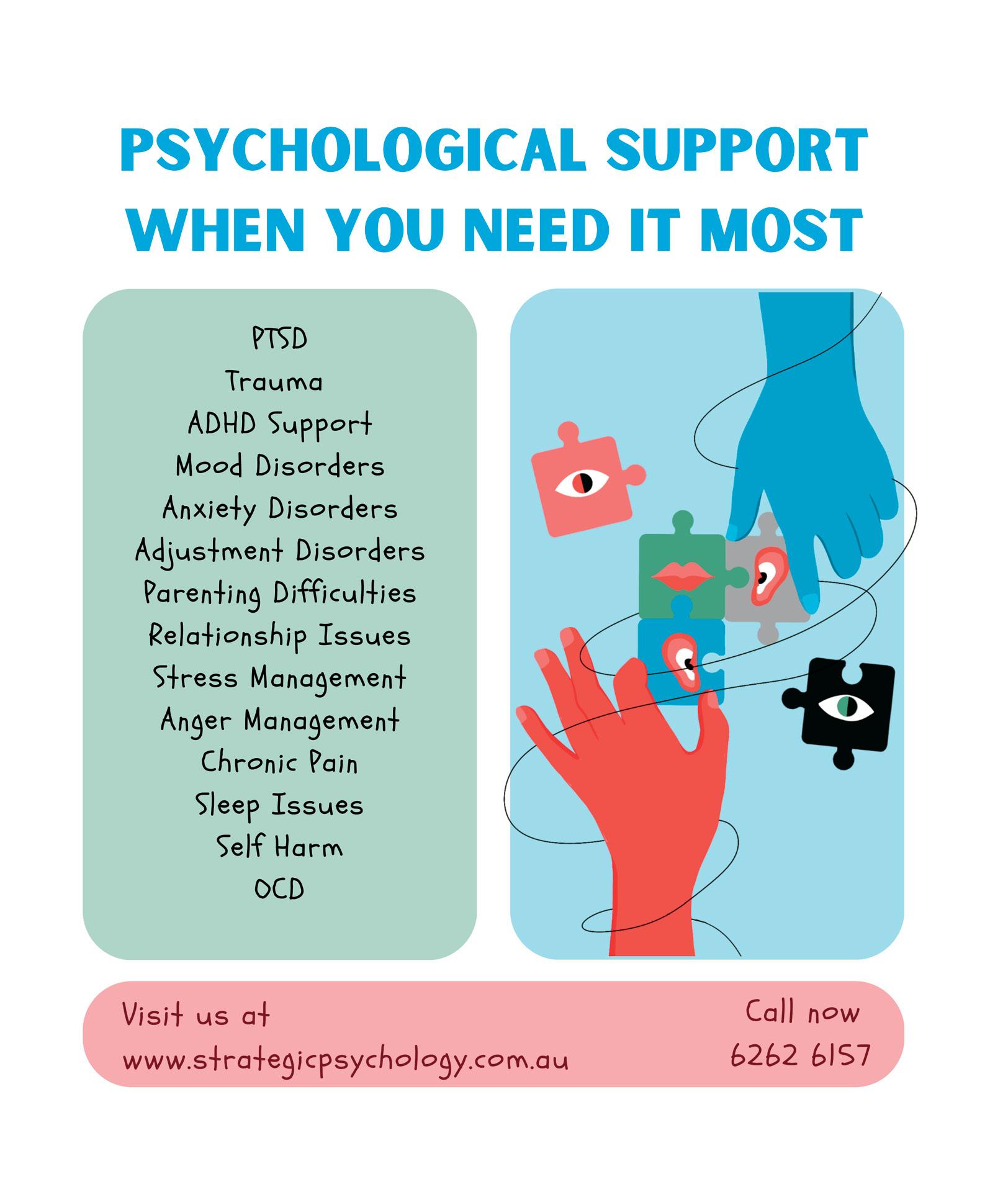Canberra Doctor is proudly brought to you by the AMA ACT Limited
CIRCULATION: 1,900 IN ACT & REGION
Informing the Canberra medical community since 1988

Voluntary assisted dying commences


Canberra Doctor is proudly brought to you by the AMA ACT Limited
CIRCULATION: 1,900 IN ACT & REGION
Informing the Canberra medical community since 1988


A long-awaited decision from the Fair Work Commission has failed to deliver sought-after pay rises for public hospital doctors in the ACT, raising the stakes for the next Enterprise Agreement.
The Fair Work Commission handed down its decision on 14 October, a year after the Australian Salaried Medical Officers Federation, supported by AMA ACT, applied to the Commission for a binding determination to resolve a deadlock in negotiations with the ACT Government over the Medical Practitioners Enterprise Agreement.
The Commission rejected both the AMA ACT’s proposal for pay rises of “CPI plus 1%” per year and ASMOF’s pay proposal, instead replicating the pay increases offered by the ACT Government, which doctors resoundingly rejected in July 2024.
Although the Commission acknowledged that the ACT Government’s pay offer would “deliver an outcome that is less than CPI over the relevant period”, it reasoned that “it is not always the case that enterprise bargaining must at least result in wage increases equivalent to CPI.”
The Commission was not convinced by arguments about the importance of preserving real wage value, or of the need for competitive remuneration to attract and retain medical staff.
It was, however, convinced by the ACT Government’s argument that in the interests of fairness, all public sector employees should receive the same relative pay increase, whether medical practitioners or non-medical staff.
“There is no cogent and persuasive argument as to why medical practitioners should be treated more favourably than all other ACTPS employees, including their fellow CHS employees,” the Commission said in its written decision.
AMA ACT President Dr Kerrie Aust said the Commission’s decision was deeply disappointing. “This outcome fails to recognise the responsibility, workload and expertise of ACT’s public hospital doctors,” she said.
“For more than three years, doctors have been working under immense pressure – managing record patient demand, workforce shortages and cost-of-living increases –while bargaining dragged on. “Competitive salaries remain vital to attracting and keeping skilled clinicians, which is essential if we are to overturn the wellknown culture problems at CHS. The Commission seems to have spectacularly overlooked the practical impact of its decision on workforce stability and the delivery of hospital services in the ACT.”
Dr Aust said AMA ACT’s attention now turns to ensuring the pay rises and backpay are implemented as swiftly as possible, and to negotiating the

This outcome fails to recognise the responsibility, workload and expertise of ACT’s public hospital doctors.
Dr Kerrie Aust, AMA ACT President
next Enterprise Agreement.
“The Health Minister has said on the record that the Enterprise Agreement is not fit for purpose, and that she wants to come up with something new that works to attract and retain medical staff. We look forward to meaningful engagement with the Government on this work in the near future.”
Dr Aust thanked the public hospital doctors who had been



involved in the campaign for fair pay to date and urged them to stay engaged as negotiations on the next Enterprise Agreement gather pace. “This is a vital time for input from our valued members, so we are urging them to get in touch about what they would like the next agreement to include,” she said.
As a result of the Fair Commission’s Decision doctors

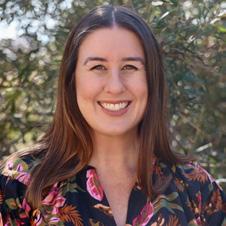
I had sincerely hoped that this edition of Canberra Doctor we’d be celebrating a fantastic win through the Fair Work Commission that would see our public hospital doctors fairly remunerated for their tireless work, and boost Canberra’s attractiveness as a place for doctors to work and train.
This could have been a great milestone in the life of our region’s health system, attracting a new generation of doctors to our great city, enabling more sustainable rosters, safer work hours, and a healthier workplace culture.
AMA ACT, together with ASMOF ACT, had put a strong case to the Commission for pay rates that would preserve the real value of wages and enable Canberra to compete

with jurisdictions like Queensland, Western Australia and Tasmania.
Unfortunately, it was not to be. The Commission’s decision on 14 October fell like a tonne of bricks on the hopes of hundreds of doctors working across the ACT public health system.
The Commission agreed with the ACT Government that doctors should not be treated differently to any other member of the public service when it comes to pay rises. This is despite the unparallelled medicolegal burden doctors bear, the sleepless nights they endure knowing the buck stops with them, and the hundreds of thousands of additional dollars they spend on training compared with non-medical staff, not to mention their expertise. I find it hard to fathom.
It’s especially bitter that the Commission’s decision comes at the time of year when final year medical students and junior doctors are busy applying for jobs. Canberra Health Services has struggled to convince our local ANU students that we are the place to work and train. A favourable

decision from the Fair Work Commission could have turned the narrative around. We know that if people put down roots in Canberra during their early years they are more likely to call Canberra home for their career. This is how we build our next generation of specialists.
In the end, the Commission’s decision is a pyrrhic victory for the ACT Government and a sad loss for the people of our region. ACT taxpayers will keep paying big money for locums, our juniors will keep working overtime, in place of the doctors CHS failed to attract and retain while squeezing the last drop of productivity from an increasingly disheartened medical workforce.
So where to from here? We get back on the horse and start negotiating for the next Enterprise Agreement. Though it may feel like a merry-go-round, I believe the ACT Government can only ignore the facts for so long. AMA ACT will keep sharing the real-life experiences of doctors working in the system, the incredible care they provide, the costs they bear and sacrifices they make, and the impact of workforce decisions on patient care. We are urging all members to make their voices heard in this next round of collective bargaining – we are stronger together, and I am confident that our advocacy will deliver better outcomes in the end.
Maintaining the AMA’s media presence is an important part of my role as your AMA ACT President.
In the last few months I’ve been interviewed for radio, print media and online on a range of topics including:
telehealth
illegal cigarettes
veterans healthcare
the Fair Work Commission decision
AMA ACT also ensures doctors voices are heard in important
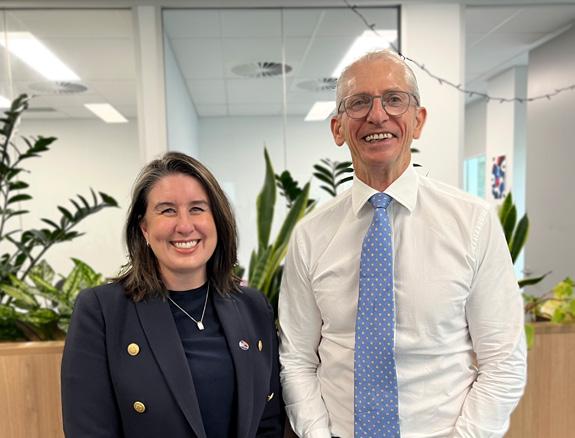
policy debates and public health reforms through our submissions to government inquiries. Recently this included contributing to the men’s suicide inquiry currently before the Legislative Assembly, and also to the ACT Controlled Medicines Reforms Survey.
Over the past few months, we’ve been speaking with members about an important proposal — for AMA ACT to become a Branch of the Federal AMA. This change reflects the current reality and is designed to make us stronger, more connected, and better able to support our members well into the future.
It’s been great to hear from so many of you through meetings, emails and conversations. Your feedback has helped shape the proposal and ensure that it keeps what matters most — a strong local voice for ACT doctors, backed by the national strength of the AMA.
The process will culminate at an Extraordinary General Meeting on Wednesday 3 December 2025, where members will be asked to vote on the proposal.
A meeting notice and information pack will be sent out on Wednesday 5 November, including the proposed bylaws and a simple overview of what’s changing and what will stay the same.
I encourage every member to read the materials and have their say. With your help, we can make sure AMA ACT continues to thrive and represent doctors proudly in the years ahead.
With membership renewals opening soon, I wanted to thank every member for your support over the past year. Together,
we’ve kept the interests of doctors and patients front and centre in the ACT. Let’s build on that momentum— continuing to grow, advocate, and strengthen our medical community in the year ahead.
All graduating ANU Medical Students and their guests, together with AMA members, are invited to celebrate at AMA ACT’s annual 2025 Graduation Breakfast on 12 December from 8.30-10am at the Grand Ballroom of the Canberra Rex Hotel in Braddon. This inspiring event is one of the highlights of the year, and such a great way to support graduates on their career journey. In addition to a delicious breakfast, there are a range of great prizes and awards.
Graduating students and AMA Member tickets are free, with guest tickets available for $45 each.
Tickets are available on the AMA ACT website or at trybooking.com/DGKKD Registration is essential. I hope to see many of you there.
In our last edition, Canberra Doctor wrongly stated that Stephani Viljoen was producer of the 2025 MedRevue. This year’s show, The Doccy Horror Picture Show, was produced by Madeleine Fisk, whereas Ms Viljoen is producer for the 2026 MedRevue. Canberra Doctor sincerely apologises for the error.

November marks the official start of once-in-a-generation reforms to Australia’s Aged Care sector, including a new rights-based Aged Care Act and the Support at Home program. The changes are aimed at ensuring Australia can meet growing demand for aged care services in the context of an ageing population, while also raising standards and putting the system on a more sustainable footing.
The Support at Home (SAH) program, an election commitment from the Albanese Government, replaces the Home Care Packages (HCP) Program and Short-Term Restorative Care Program.
Participants will pay contributions based on an assessment of their income and assets.
Contributions will differ for:
clinical supports (e.g. nursing, podiatry and physiotherapy)
– no contribution
independence services (e.g. personal care, social support, respite care, community engagement and transport) – moderate contributions
everyday living services (e.g. domestic assistance, home maintenance and repairs, and meals) – highest contributions
The program was initially slated to commence in July, but the Federal Government deferred it until November to give the sector more time to adapt. However, under pressure from a group of cross-party parliamentarians, the Government agreed to release 20,000 packages in September ahead of the official start.
The department of health revealed in July that a staggering 200,000 Australians were waiting for their approved package or for an assessment.
MaryMeade CatholicCare Canberra & Goulburn is one of many providers of home care services in the ACT who have been preparing for the transition. Their spokesperson said doctors could help support their patients through the changes in the following ways:
Doctors can provide reassurance that care will continue for existing Home Care Package clients under
Voluntary assisted dying is a legal end-of-life option in the ACT from 3 November, alongside palliative care. It provides choice and control for people who have a terminal medical condition that is causing intolerable suffering.
the SAH program, though the structure and funding may change.
Referrals for home support services will continue to be made through My Aged Care. Doctors can assist patients by initiating referrals or supporting them through the assessment process. It will be helpful to identify any support needs and cognitive decline at the time of referral so that patients can be provided with an adequate funding level from the start. The Dementia and Cognition Supplement available under HCP will not be available under SAH. If further supports are required, individuals will need a re-assessment of their package.
The Support at Home program aims to simplify access and tailor services more closely to individual needs. Patients will receive a Notice of Decision and a Support Plan outlining the approved funding. Doctors should be aware that there may be limitations to what their patients will be able to access under SAH based on their individual circumstances. They will also be expected to pay a contribution and there will be a limit to the rollover of their unused funds. Doctors can support their patients to receive appropriate funding based on their individual needs but also manage expectations as to what can be accessed.
Clinical collaboration
There will be increased emphasis on collaboration between healthcare providers and aged care services. Doctors may be contacted more frequently for care planning, coordination and support for re-assessments.
It is available to adults within the ACT who meet the strict eligibility criteria and follow all steps in the process. Eligibility must be confirmed by two independent authorised voluntary assisted dying practitioners. There will be 10 steps in the voluntary assisted dying process in ACT. An overview of the process is provided in the infographic. Patients can stop or pause the process at any time. Details on how to support your patients who may wish to access voluntary assisted dying can be found on act.gov.au (search for ACT voluntary assisted dying). This includes a guide about the obligations of health professionals, clinical guidelines and general awareness training on the voluntary assisted dying process.
Health professionals can refuse to take part in any stage of the voluntary assisted dying process. However, it is important to note that you can object but not obstruct. If you are a regulated health professional, a social worker or a speech pathologist and your patient requests information or access to voluntary assisted dying you must give them the written contact details of the ACT Voluntary Assisted Dying Care Navigator Service within 2 business days. The Care Navigator Service can assist you or your patients with enquiries and help you to find an authorised practitioner. Information supplied by the ACT Health and Community Services Directorate.
ACT Voluntary Assisted Dying Care Navigator Service (02) 5124 1888 or VADcarenavigators@act.gov.au

Supporting People in Your Care (includes general awareness training video)

Guide for Health Professionals

Voluntary Assisted Dying Clinical Guidelines
There is a thorough request and assessment process to access voluntary assisted dying in the ACT. Below is an overview of this process
There is a thorough request and assessment process to access voluntary assisted dying in the ACT. Below is an overview of this process. Patients can stop the process at any time.
First request: a person makes a first request for voluntary assisted dying to an authorised voluntary assisted dying practitioner.
First assessment: the person’s coordinating practitioner checks if the person is eligible to access voluntary assisted dying.
Consulting assessment: a consulting practitioner also checks if the person is eligible.
Second request: the person makes a written declaration to confirm they want to access voluntary assisted dying.
Final request: the person makes a clear final request for voluntary assisted dying.
Final assessment: the coordinating practitioner confirms the person has decision-making capacity and is acting voluntarily and without coercion.
Administration decision: the person decides between self-administration or practitioner-administration of the voluntary assisted dying substance.
Prescription and supply: the voluntary assisted dying substance is prepared and supplied by the ACT Voluntary Assisted Dying Pharmacy Service.
Administering the substance: the voluntary assisted dying substance is either self-administered or given by an administering practitioner.
After death: the person’s death is confirmed, certified and the ACT Voluntary Assisted Dying Oversight Board is notified.
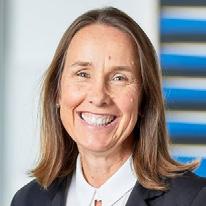
GABRIELLE SULLIVAN
Sullivans Legal Co
What is workplace bullying?
In everyday conversation, bullying is often described as a feeling—being mistreated or disrespected. But legally, it has a precise definition. Under the Fair Work Act 2009 (s 789FD), workplace bullying occurs when a person or group repeatedly behaves unreasonably towards a worker or group, creating a risk to health and safety. Importantly, the legal test is objective. It doesn’t matter how the person on the receiving end feels or what the perpetrator intended. The
Workplace bullying is a persistent issue in the medical profession.1 High-pressure environments, rigid hierarchies, and entrenched workplace cultures can create fertile ground for bullying behaviours.
Whether you’re a junior doctor facing intimidation or a senior clinician navigating complaints, understanding the legal framework and practical strategies is essential. This article breaks down the key legal concepts and offers guidance tailored for doctors.
question is: would a reasonable person consider the behaviour unreasonable in the circumstances?
So, comments like ‘it was just a joke’ or ‘I didn’t mean it’ or ‘I had been drinking at the time’ don’t hold up legally. The behaviour must be both repeated and unreasonable. Examples include threats, verbal abuse, humiliation, exclusion, malicious rumours, unjustified criticism, and overbearing supervision (though the list of possibly bullying behaviours is infinite). However, not all unpleasant experiences count as bullying. Reasonable management actions— like performance reviews or
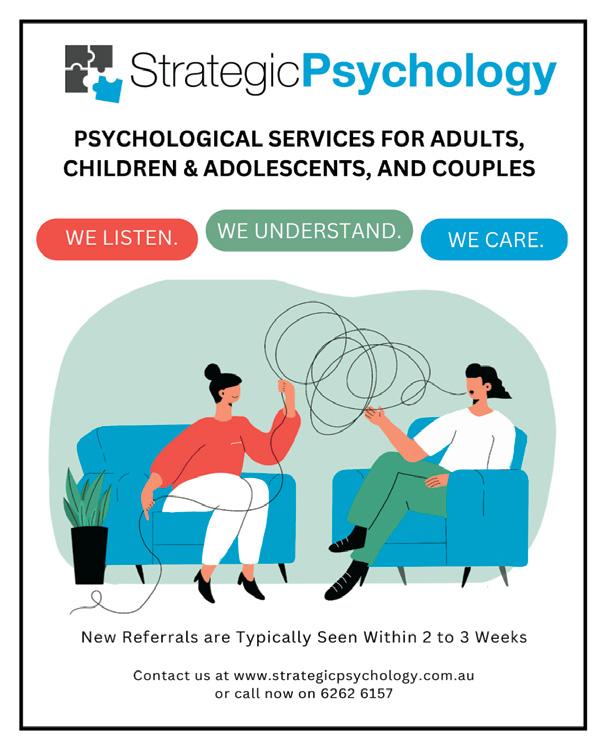
disciplinary procedures—are not bullying if carried out reasonably. It’s probably also worth noting that the test is whether the conduct is ‘unreasonable’ – not whether it could have been done in manner that was ‘more reasonable’ or ‘more acceptable.’
Under Work Health and Safety (WHS) laws, everyone in the workplace has a role to play. Employers must take all reasonably practicable steps to ensure psychological safety in the workplace. That includes preventing and responding to workplace bullying incidents. Employees also have duties: they must avoid conduct that risks others’ safety, and they must cooperate with the employer’s WHS processes. But ultimately, prevention is not about legal compliance. It’s really about culture. Respectful behaviour starts with proper modelling from the top, and there is really no substitute.
Modelling can then be reinforced through clear policies, training, and ongoing communication. Add in regular consultation with staff, and ongoing monitoring and review and you are well on your way to both discharging your WHS obligations and fostering a respectful workplace culture.
When bullying claims arise, how they’re handled can make or break the outcome. Policies must be responsive, fair, and confidential. Common mistakes include delayed action, vague allegations, reliance on hearsay, and unnecessary

public announcements about investigations in progress. Decision-makers must remember their core purpose: not to punish, but to protect the lawful and productive functioning of the workplace.
If internal processes fail, workers—including contractors, trainees, and volunteers— can apply to the Fair Work Commission (FWC) for a ‘stop bullying order’. The FWC may order certain behaviours to stop, enforce policy compliance, adjust work arrangements, or mandate training.
Note: The FWC does not award compensation. For damages, separate legal avenues like breach of
contract or negligence, or workers compensation claims must be pursued.
Workplace bullying isn’t just a legal issue—it’s a threat to staff wellbeing and patient care. Doctors at all levels must understand their rights and responsibilities. With vigilant and informed leadership and a commitment to respectful culture, we can build safer, healthier workplaces for everyone. The entire health system will benefit.
1See, eg Haskell, Stankovich and Merridew (2024). A new framework for Australian specialty colleges and other healthcare leaders to address bullying, discrimination, and harassment that involves doctors.
The Lancet Regional Health –Western Pacific 48(July) https://doi. org/10.1016/j.lanwpc.2024.101118.

Gabrielle Sullivan is Managing Legal Practitioner and Director at Sullivans Legal Co, and a Law Society Accredited Specialist in Employment & Industrial Law www.sullivanslegal.com.au.
The content of this article is intended to provide a general overview on a matter of interest. It is not intended to be comprehensive. It does not constitute legal advice and should not be relied upon as such. You should seek legal or other professional advice before acting or relying on any of the content.
COVER STORY Continued from page 1
can expect the following sector-wide pay increases.
$1750 from Jan 2023
1% from June 2023
$1750 from Dec 2023
1.5% from June 2024
1% plus $1,500 from Dec 2024
1% from June 2025
1% plus $1000 from Dec 2025
For example, this means that from December 2025, doctors will receive the following salary, according to classification:
Intern: $88,485
RMO1: $102,486
Registrar 1: $125,473
Registrar 4: $155,223
Senior Registrar: $173,760
Specialist Band 1: $204,936
Senior Specialist: $274,696
To have your say email president@ama-act.com.au
The dream of an Australian Centre for Disease Control based in Canberra is nudging closer to reality, with draft legislation introduced into parliament and a Director-General soon to be announced.
The new statutory agency will open at Aviation House in Woden on January 1, nearby the Department of Health, subject to the passage of legislation. It is expected to employ around 250 staff. Applications for the position of inaugural DirectorGeneral closed in September.
Once up and running, the CDC will permanently monitor and assess public health risks, while also proactively working to prevent them and prepare for future crises. The draft legislation creates a datadriven organisation, with the aim of enabling more accurate and faster detection of risks, more consistent responses across borders and a strong foundation for national public health planning.
Professor Paul Kelly, who was Chief Medical Officer during the Covid-19 pandemic, has been intimately involved in planning for the new authority, serving as head of the interim CDC until his retirement in November 2024.
“I was extremely happy to see the legislation to create the CDC introduced into parliament,” Professor Kelly told Canberra Doctor The new legislation gives the Director-General substantial powers to advise the Health Minister on measures to protect public health in an emergency, akin to those exercised by the CMO during the Covid pandemic. These included
Doctors have until 28 November to make their voices heard as part of an inquiry into the ACT’s health system data, demand and processes.
The inquiry was called for by the Canberra Liberals and ACT Greens and is being chaired by Michael Walsh PSM. Mr Walsh was directorgeneral of Queensland Health until November 2024, when the incoming Queensland Liberal government removed him and several other department heads who had served under Labor.
closing borders and restricting the movement of people and goods.
Professor Kelly said it was “very pleasing and appropriate” that under the new legislation, any direct advice given by the Director-General must be published on the Centre’s website within 30 days of it being given.
By contrast, Professor Kelly said that during Covid-19, when Australia was under-prepared for a public health crisis of that scale, it wasn’t always clear to the public when the Prime Minister and Health Ministers were acting based on advice from the CMO.
“Transparency is important to building public confidence and trust in public health measures,”
Professor Kelly said.
The draft legislation gives the Director-General power to enter into agreements with other organisations, including states and territories, foreign government bodies and international organisations, for whatever purposes necessary to support the aims of the CDC. These may include data collection, data analysis, and formulating advice. All such arrangements must be transparent and published.
Professor Kelly welcomed the codifying of these powers and responsibilities. “It gives protection to the Director-General, which wasn’t the case when I was CMO, and that was on occasion, uncomfortable,” he said.
Introducing the landmark legislation, Health Minister Mark Butler said: “We know there will be another pandemic and the Australian CDC will make sure we are better prepared.”
The draft legislation was referred to a senate committee inquiry on 4 September, with the inquiry due to report on 24 October.
The ACT Government has defended the independence of its latest inquiry, amid suggestions from Canberra Liberals leader, Leanne Castley that Mr Walsh is a friend of Labor.
“The Directorate undertook
a proactive search of health experts nationwide and collated a field of several eminent and highly skilled candidates,” a spokesperson for the Health and Community Services Directorate said. “The Directorate then approached the candidates and assessed their skills, experience and availability, and recommended the most appropriate candidate from this search to the Minister, who sought agreement from the Chief Minister.”
The last major inquiry into the ACT health and hospital system was the Independent Review into Workplace Culture within ACT Public Health Services in 2018-
Submissions can be made at the link below before 28 November 2025, or via email at healthinquirysubmissions@act.gov.au. https://www.act.gov.au/open/inquiryinto-act-health-system-data-demand-andprocesses#Consultation-and-submissions

19, led by Mick Reid AM, who, like Mr Walsh, served as a director-general of health during Labor governments (in both NSW and Queensland).
Mr Walsh commented: “As Chair I am committed to conducting a thorough, independent and transparent inquiry and look forward to providing advice and recommendations to the Health Minister about what is working and where things can be improved for the betterment of everyone who uses and works in the ACT health system.”
Mr Walsh has commenced site visits across ACT public health facilities, including Canberra Hospital, North Canberra Hospital and the Weston Creek Walk-in Centre. A final report will be tabled in the ACT Legislative Assembly by 30 June 2026.

We are excited to announce the opening our new collection centre in Dickson.
Suite 2, 151 Cowper St, Dickson (Two doors up from our existing Dickson location)
Open 7.30am to 6pm Monday to Friday 7.30am to 12pm Saturday P 6285 9415
Appointments

Like many doctors, Dr Christine Perera, a registrar at Canberra Hospital’s Emergency Department, knows the heartache of trying to juggle a medical career with family life.
In 2021, she and her husband Dilum (also a doctor), moved from Sri Lanka to Western Sydney with their daughters, aged one and five, so she could undertake the overseas component of her emergency medicine training at Campbelltown Hospital.
For two years, the couple worked long hours in the NSW Hospital system, pushing themselves to the limit to work and train while adapting to a new culture.
Evening shift was a killer, Dr Perera recalls. “You’d finish at 1am and then be too tired the next morning to get up to see the kids before they went off to daycare and school.”
Looking back, she has a moment of sadness. “My youngest daughter grew up like a plant and I missed it. I can’t get those years back.”
At the end of that two-year training period, Dr Perera started to think about how she might find a more family-friendly way of working.
She watched friends leaving the hospital system to work in general practice, and many encouraged her to do the same. “General practice is the obvious choice if you want to be available for your kids, because you get to pick your hours,” she says.
Dr Perera’s husband Dilum entered general practice, taking a position at Murrumbateman. However, Dr Perera’s passion had long been for emergency medicine, and she wasn’t ready to give up on it.
“I feared that if I became a GP for family reasons, it wouldn’t be long before my daughters grew up and flew away, and then I’d be stuck doing a job I didn’t enjoy.”
In a last-ditch effort, Dr Perera emailed Canberra Health Services, to see if they might take her on parttime in the Emergency Department as an unaccredited registrar.
“I explained that moving to Canberra was a huge thing for our family. I wanted to help our kids settle in their new schools, in a new part of Australia.” Dr Perera was doubtful her

request would be granted –at Campbelltown Hospital, she’d only seen part-time registrar positions offered in exceptional circumstances.
Yet, within days she got a call back from CHS saying she could work 0.5 FTE. “I was really surprised. They were hugely supportive from the beginning.”
Today’s junior doctors are more likely to have significant family responsibilities compared to generations past. They’re entering medicine older, spending more time in training, and often co-parenting with someone who’s career is as demanding as their own.
Not all junior doctors are bold enough to ask for part-time work as Dr Perera did. Nevertheless, it’s clear many would like more flexible arrangements.
The Medical Training Survey of over 20,000 junior doctors across Australia found around a quarter had accessed flexible working arrangements in 2024. A further one-fifth said they had considered it, but either found they were unable to, or chose not to.
Professor Jenny Gunton, an endocrinologist at Westmead Hospital in Sydney, has watched successive cohorts of trainees stretch themselves to the limit while juggling a medical career and a family. In 2023 she joined a group of concerned doctors writing in the journal Healthcare* that it was “time to end the martyrdom of medicine”.
better able to deliver the highest standards of medical care. This is a win-win,” she says.
Associate Professor Lucinda Berglund, a director of the basic physician training program at Westmead, says it’s important to have a supportive culture wrapped around family-friendly policies.
“Making a workplace familyfriendly doesn’t just mean making restrictions on hours and special allowances for these doctors, it also means accepting that they bring an additional skill set – doctors who are also parents are often extremely good at multi-tasking and prioritising, and they bring a maturity and big-picture understanding to their work which makes them very valuable as employees.
imperative to attract more women to the traditionally male-dominated profession.
Canberra orthopaedic surgeon, Dr Sindy Vrancic, has been a leader in reforming the orthopaedic training program through her role on the Australian Orthopaedic Association’s (AOA) Federal Training Committee.
“The biggest change is that training has moved from a timebased apprenticeship model to a competency-based model, which means it’s possible to take time off if you need to,” she says.
“You can now take up to eight years to do your training, as long as you reach your competencies. And because of that, we have capacity for ‘less than fulltime’ training,” she says.
"We have to stop grooming our trainees for a profession with work-life conflict and self and family sacrifice,” they wrote. In their paper, the group put forward a list of criteria for what a familyfriendly workplace should look like and how to measure it. The list included things like supporting part-time work and training, and flexibility around leave.
Professor Gunton is under no illusions about the challenge of trying to run a 24/7 teaching hospital while meeting staff requests for flexible work arrangements in a way that is fair and equitable.
If doctors are happier, they’re better able to deliver the highest standards of medical care. This is a win-win.
Nevertheless, she says there’s a lot more most hospitals can do to enable their medical staff to be “both good doctors and good family members”.
She gives the example of reforms to the basic physician training program at Westmead Hospital, which have made it much more family-friendly. These range from asking trainees their preferences for rosters, to offering a variety of job-sharing arrangements, to encouraging consultants to do their ward rounds during hours. “If doctors are happier, they’re
“Unfortunately, if the actions are only put in without the culture being supportive, then doctors needing flexibility may still feel concerned that others will resent these changes.”
Training requirements add an extra layer of difficulty in achieving flexible work arrangements. Nevertheless, significant reforms are underway to enable trainees to take leave or work part-time if they need to.
The Royal Australasian College of Physicians (RACP) updated its Flexible Training Policy in 2023, to exclude parental and medical leave from training time limits. The RACP also offers a Return to Training Pathway to support those re-entering training after extended leave.
As of 2023 the RACP also enables part-time training, at a minimum of 0.2 FTE. Each proposal is assessed individually, to see if the training plan meets the required learning objectives.
Reforms are also underway in GP land. Despite its family-friendly reputation, general practice has long had the disadvantage of being the specialty where trainees cannot access paid parental leave.
This is set to change from January 2026, with GP trainees able to access up to 20 weeks of paid parental leave under new Federal Government reforms aimed at overcoming the shortage of GPs nationally. The package also includes $30,000 in salary incentive payments for new GP trainees in accredited training positions. Surgical training is also adapting, in part driven by the
We have to stop grooming our trainees for a profession with work-life conflict and self and family sacrifice.
Hospitals with three or more orthopaedic training positions are now required to offer at least one orthopaedics training position at ‘less than full time’, in order to meet AOA’s accreditation requirements.
“For a trainee who may require reduced training commitments, due to medical or family reasons, there are options for filling a supportive training post with reduced requirements,” Dr Vrancic says. She says the reforms have enabled more trainees to successfully complete their training and have led to “a huge influx of women”.
“We're having so many fewer trainees drop out, because of the flexibility. We certainly have some who’ve struggled and needed some time away, and then we’ve been able to successfully reintegrate them back into the program.”
Dr Vrancic says achieving this kind of flexibility in training requires lots of “toing and froing” between the AOA and the hospital. “It’s not easy.”
There are many things employers can do to smooth the way. The AMA National Code of PracticeFlexible Work and Training Practices provides guidance on implementing best practice flexible work and training policy and arrangements.
*Peisah et al. (2023). Operationalising the Family-Friendly Medical Workplace and the Development of FAM-MED: A Delphi Consensus. Healthcare, 11(12), 1679.
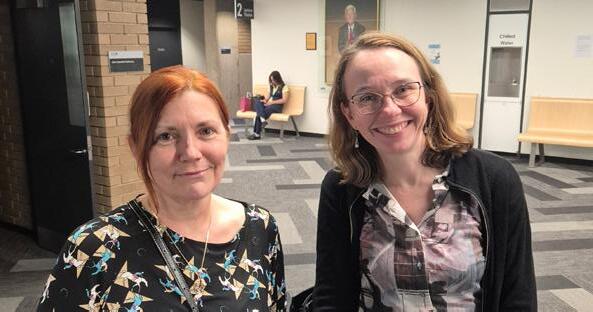
For hospitals, these include things such as:
working with colleges to create, promote, and coordinate flexible work and training arrangements;
having clear and accessible policies about flexible work and training arrangements;
having adequate resourcing, staffing levels and relief staff to accommodate requests for flexibility and accrued leave;
having systems to access and manage flexible work arrangements, including job-share partners.
While there’s much that employers and colleges can do to become more family-friendly, individuals also need to make decisions about what’s best for their career and their family. It begs the question; are there specialties junior doctors should not pursue if they want work-life balance? Also, is there a case for “timing your run” into a training program according to your family situation?
Dr Vrancic is often asked by medical students how to balance career and family. Her advice may not be the reassurance many are seeking.
“No job in medicine is ‘a good job for family’,” she says. “All of medicine has high demands.”
“I don't think orthopaedics is any worse than any other specialty – however it’s true that orthopaedics has some special considerations, as it requires repetitive skills and dexterity, and so you have to keep up a minimum amount to be good at it. That doesn't mean you can't have breaks, but it's not a job that you can do part-time.”
Dr Vrancic advises young female doctors and medical students that the best time to have a baby is “when you want to, and as soon as you can, because we know that by delaying it your fertility plummets”. As for delaying specialty training until the kids are older? “In orthopaedics your chance of getting on an accredited training post is one in
Perera makes a special effort to introduce herself to those she doesn’t know, and to attend morning huddles and social events.
Training is another challenge. “It’s obviously harder to progress in your career when you’re part-time,” Dr Perera says. “I join in on 80% of the teaching time, accessing it online.”
five. So, if you wait you may never get on. There is no good time.”
Dr Vrancic’s son was two-years-old when she entered orthopaedics training, and then she had a baby while on the training scheme.
“I had the most incredible guilt about leaving my two-year-old,” she says.
“I missed my oldest son’s first day of school and all of those things because I had to go away for six months as part of the training.”
While it was hard for Dr Vrancic, she says she believes it’s even harder for today’s orthopaedic registrars.
“What’s changed is what our partners do. In the old days the wife would stay home and look after the kids. Whereas now many trainees don’t have partners, or their partners have equivalent careers.”
The competition to get on many training programs is also much fiercer than in generations past. Orthopaedics training typically involves 2-3 unaccredited years, then 4-5 accredited years (which could be anywhere depending on where you get accepted), then a year or more specialising.
“And then when you’re a new consultant you’re working long hours and doing the jobs no one else wants so you can build up your list and your reputation.”
In the end, Dr Vrancic believes that for doctors “there is no such thing as work life balance”.
“It's a seesaw and it's eternally changing. What matters is adaptability and having people around you who can adapt and support you.”
For Dr Perera, going part-time has enabled her to continue to follow her passion, while also being actively involved in her children’s lives.
“There are some challenges, for sure,” she says. “I’m a senior registrar, so I have a level of responsibility. To stay on top of it all, I read my emails every day, making sure I’m across all the updates and new protocols.”
It can be hard getting to know other staff as a part-timer, so Dr
Dr Perera works a mix of shifts, but especially requests night shifts as they enable her to pick up her kids from school a couple of afternoons a week. Those afternoons are full of ordinary things – running baths, washing hair, homework, television. And yet, Dr Perera has no doubt they’re hours well spent.
“In the car on the way home is when the kids open up about their days and any problems they’re having. I’m glad I can be there for them – I can see they’re growing up nicely and they’re well connected to me.”
Next year, Dr Perera plans on applying for an accredited training position, and if successful will return to full-time work.
“Now that everyone in my family is happy and settled into life here in Canberra, I feel good about going back to full-time work while I try to get through the training,” she says.
Does Dr Perera have any advice for others struggling to juggle work and family?
“Everyone’s family is different, but in our case, it made sense for me to take a step back for a little while.
“I would encourage people not to be scared to talk to your manager about your situation and what you need. In my experience, they’ve always been warm and considerate, and I feel like they care about me and my family.”
The AMA position statement on flexibility in medical work and training practices can be found at ama. com.au/articles/flexibility-medicalwork-and-training-practices
Are you struggling?
Being a full-time parent while working full-time/part-time in medicine might feel overwhelming at times.
Drs4Drs ACT offers a telephone help line, providing independent and confidential advice for registered medical practitioners and medical students in the ACT. Advice is also provided to anyone who is concerned about a doctor or medical student. This includes family, friends, colleagues, university staff and clinical staff.
No problem is too trivial or too serious. Drs4Drs 24/7 Help Line 1300 374 377
Is
Like many hospital organisations competing to be an employer of choice, Canberra Health Services says it is committed to being a family-friendly workplace. Its doctors have mixed reports about whether that matches with their day-to-day experiences.
Dr Clair Bannerman, an AMA ACT board member and PGY2 at CHS told Canberra Doctor:
“Different areas of CHS have different cultures, and different operational requirements, which affects how willing they are to accommodate requests for flexible working arrangements and leave requests. There also seems to be some variation in whether they’re willing to bring in locums to cover for staff on leave.”
“In my own experience, I’ve had some lovely rostering managers, who’ve bent over backwards so I could have a couple of weeks with my kids in the school holidays. Then again, I’ve had other times where I’ve really had to advocate for myself to get some time off.”
CHS points to reforms it has recently implemented to support staff wellbeing, including enabling more flexible arrangements for junior doctors.
Significantly, in 2023, CHS introduced two-year contracts for all interns. For the 2025 intake this approach evolved into threeyear contracts. Additionally, all new RMOs at CHS are offered two-year contracts upon commencement. These changes provide extended timeframes for the completion of training requirements, enabling doctors to plan for extended leave and maintain continuity in part-time roles.
Part-time arrangements have also become more common at CHS in recent years, with a spokesperson saying the organisation accommodates part-time requests where possible.
CHS currently has 43 registrars working part time – 70% in college accredited roles and 30% in unaccredited
roles. The majority are within Emergency Medicine, Paediatrics and Psychiatry.
One continuing sore point among many junior doctors at CHS is its approach to allocating regional placements to sites such as Goulburn and Cooma, with some junior doctors reporting there is little regard for whether they have caring responsibilities.
CHS says efforts are made to ensure that rural training secondments are not disruptive and are primarily provided to those who have expressed a desire to undertake these opportunities.
“Both interns and RMOs are specifically asked if their personal circumstances would impact them undertaking a rural rotation,” a CHS spokesperson said. “This is taken into consideration.”
Nevertheless, CHS says there are times when preferences are unable to be accommodated. “The rural locations are aware of the impact on family life that these placements may present and many are able to provide family friendly accommodation to the junior doctors to facilitate families also living in the secondment locations, if required.”
Dr Bannerman says she appreciates that there’s a tension for hospitals between providing an essential service for the community and being a family-friendly employer, with the constraints of a limited workforce and budget pressures.
Even still, she says doctors should feel comfortable to “have a conversation with their employer about how they might best achieve the flexibility they need without minimising operational capability.”
The Healer’s Art course is once again being offered at ANU School of Medicine and Psychology, after a Covid-era hiatus. The fivesession course is a strong reminder for students about their values and the reasons they do medical training, with its focus on the ‘why’ of medicine.
Associate Professor Stephen Martin, head of the ANU’s Academic Unit of General Practice, first undertook the course 15 years ago as a medical student at the ANU, and recently trained as a course director.
“The course fosters beliefs and practices among medical students that support self-care and helps them to become better doctors,” he said.
“It’s very different to anything else students encounter at medical school or on the wards.
We ask participants to get out of their heads, and away from all the science and medical information, and to reflect on the deeper, humanistic aspects of being a doctor.”
The course format breaks down the traditional hierarchy in medicine, with practising clinicians sitting alongside students in small groups. Through storytelling, drawing and discussion, participants explore what being a doctor means to them, and consider how they can enrich their patients’ and their own lives by bringing their whole selves to their work.
The course covers topics such as ‘sharing grief and honouring loss’, ‘awe in medicine’, and ‘service as a way of life’, and strongly affirms the values of empathy and compassion.
A/Prof Martin described the course as a counterbalance to the rigorously intellectual and highly competitive

process of medical training.
“The process of medical training is a powerful culture-shaping force, which can flatten out individual difference, and lead to a loss purpose and burnout, for some people,” he said.
“The course helps participants to park some of their worries about performance and outcomes, and focus on the heart of medicine.
“There’s an emphasis on the importance of connecting with patients, through generous listening, and on sharing our own lives.”
The Healer’s Art was developed in the 1990s by American physician, Dr Rachel Remen, and has been offered in more than 100 medical schools worldwide. Dr Remen, who has a background in humanistic psychology, encourages doctors to think of themselves as ‘healers’.
“Our expertise, science and technology cures people, but


only our humanity can heal them,” Dr Remen says. The course has received strong positive feedback from participants over the years, with many saying it has helped them develop
positive relationships with patients, and supportive relationships with medical peers.
This year 22 medical students at ANU participated in the course. It will be offered again in mid-2026.
“We would love support from local clinicians who would like to do the course with students,”
A/Prof Martin said.
Those interested can contact A/Prof Martin at stephen.martin@anu.edu.au

Your income is your greatest asset. How are you protecting it?
When setting up a medical practice, most professionals wouldn’t dream of going without insurance for fire, flood, or storm damage. But while property insurance covers the physical damage, it doesn’t protect what many practices rely on most – income.
A recent survey by CGU
Insurance found that 1 in 4 businesses wouldn’t survive a three-month closure. That figure increases to 38% if the disruption happens during a business’s peak season. It’s a sobering reminder that disruptions don’t just impact operations, they threaten the very sustainability of your business.
That’s where Business Interruption insurance steps up to the plate. This type of cover can be the difference between a temporary setback and a permanent closure. It helps cover ongoing expenses and income loss while you recover from an unexpected event,
ensuring you can survive the disruption and rebuild stronger.
What does Business Interruption insurance cover?
Business Interruption insurance can provide cover for:
Loss of income due to temporary closure or reduced capacity
Relocation costs if you need to move to a temporary or new premises
Ongoing operating expenses like rent, electricity, and loan repayments
Wages so you can continue paying staff during the closure
Additional costs incurred to
minimise the interruption or resume operations sooner
This type of cover is particularly relevant for medical practices, where continuity of care is important and your patient’s trust is hard-earned. Being able to get back on your feet quickly after a major event means you can retain your team, support your patients, and reduce the risk of long-term business damage.
Understanding your risk
Imagine if some unforeseen event forces you to close your practice doors – the financial impact could be major, even if it’s just a few weeks. Rent, wages, utilities, equipment leasing, and

supplier payments don’t stop just because your income does. And in the meantime, your patients could get desperate and seek care somewhere else, leading to longer-term impacts on your client base and reputation.
Before you can protect your practice, you need to know where the cracks might be.
Business Interruption insurance isn’t one-size-fits-all. The right cover depends on your size, services, location and how your practice is set up.
In today’s climate, it’s not just clinical risks you need to plan for. It’s about thinking bigger – protecting your operations, income, and long-term resilience.

Talk to an advisor who understands medical businesses and can guide you through the cover you need to stay protected, no matter what comes your way.
Contact us on 1800 988 522 or cutcher.com.au/contact

• Market leading gap cover with 93% of medical services covered1
• We value freedom of choice with no restrictive preferred provider networks for extras
• We are highly rated by our members, with a 94% member satisfaction rating in 20242

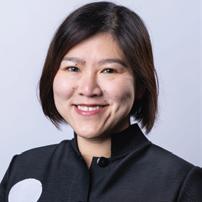
BY DR BETTY GE
Dr Sue Packer AO gave the 2025 Jane Dahlstrom Annual Lecture at the Australian National University in August.
Dr Packer, one of the ACT’s most revered paediatricians and a lifelong champion for children’s rights and wellbeing, was invited to speak on the topic
of ‘How to make a difference’.
Dr Packer traced her journey from treating childhood trauma in clinical settings to transforming hospital environments to be more nurturing and childfriendly. Her message was clear and powerful: change begins with empathy, creativity and a commitment to community.
As a Senior Paediatrician at Canberra Hospital, Dr Packer witnessed firsthand the impact of trauma on young lives and became a tireless advocate for trauma-informed care.
She played a pivotal role in shaping child protection policies and improving the way health systems respond to vulnerable children.
Her work earned her the title
of ACT Senior Australian of the Year in 2019, a recognition of her unwavering dedication to advocacy and reform.
Dr Packer urged attendees to recognise their own capacity to make a difference, no matter their role or background. Her warmth, humility, and fierce commitment to justice left a lasting impression on all who attended.
The lecture was named in honour of Professor Dahlstrom, a renowned leader in medical education and pathology.
Professor Dahlstrom continues to influence national standards through her role as Chair of the Australian Medical Council’s (AMC) Medical School Accreditation Committee (MedSAC).
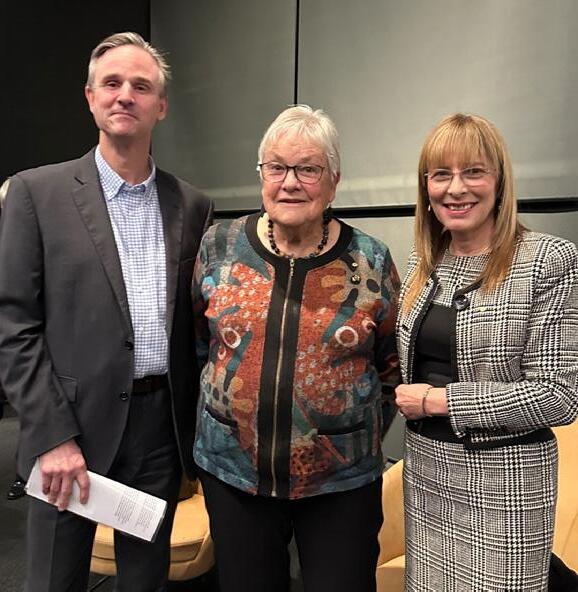
Medical school is demanding, exciting, and can at times be a little overwhelming. Amid lectures, placements, and exams, one essential step often overlooked is finding a GP of your own. Having a trusted GP of your own is not just about convenience — it’s a cornerstone of good health and wellbeing.
Medical students are often at risk of putting their own health last. It can feel easier to self-diagnose, lean on peers, or avoid care altogether. But just as patients deserve proper medical attention, so do our future doctors. A GP provides confidential, independent care that caters for the needs of medical students.
This is especially vital in areas such as mental health, where early support can make all the difference, and in preventative care like vaccinations, screening, and sexual health. Having a GP also ensures continuity of care if you have or develop ongoing conditions, need referrals, or require help managing stress and other challenging situations.
Importantly, seeing your own GP helps build healthy habits for a lifetime in medicine. It models the professional boundaries we expect of doctors, reduces stigma about seeking care, and reinforces the message that looking after yourself is part of being a safe, effective practitioner. Drs4Drs ACT recognises how

important this is and has established a reference group of GPs who are available to see medical students as patients. All contact is completely confidential. To be connected with a GP, medical students can reach Drs4Drs ACT via email tasact@drs4drs.com.au or call 1300 374 377.
Canberra Health Services has introduced a new program to support International Medical Graduates (IMGs) in their transition to Australia and to the ACT health system.
The IMG Transition Program runs twice a year and aims to capture IMGs in the first 12 months of their move to CHS. The two-day program includes an introduction to the Australian health care system, including the Pharmaceutical Benefits Scheme and Medicare, as well as an overview of CHS systems and processes. Other topics covered include consent, and working within a multidisciplinary team.
As IMGs, we often enter with limited understanding of the pathways, escalation processes, healthcare systems, and care networks. This program provided a comprehensive overview that helped me better navigate my rotations and transitions.
Dr Pavithra Elamurugan
said it was “incredibly valuable”.
“One of the most impactful aspects was hearing from IMG speakers who shared their experiences,” she said.

and inspiring. It reminded me that while the journey can be complex, it’s also filled with resilience and support.”
Dr Marisa Magiros, Director of Education and Training for IMGs, said CHS was pleased to be offering the program.
“We continue to make modifications to enhance the program based on feedback received from participants,” Dr Magiros said.
Meanwhile, there are growing calls from IMG-advocates for health services to move toward Work-Based Assessments (WBA) as an alternative to the Australian Medical Council (AMC) clinical examinations. A CHS spokesperson said it continues to explore the feasibility of implementing such a model.

Dr Pavithra Elamurugan, an RMO at the Canberra Hospital who recently arrived from India, is one of 48 doctors to have participated in the program to date and

“Seeing others who have successfully navigated the system gave me a sense of reassurance and direction.
“As IMGs, we often enter with limited
understanding of the pathways, escalation processes, healthcare systems, and care networks. This program provided a comprehensive overview that helped me better navigate my rotations and transitions.

by other IMGs—and how each person is
“We are committed to supporting IMGs through existing pathways and are closely monitoring national developments and local demand to inform future decisions around WBA delivery in the ACT,” the CHS spokesperson said.
When asked if they felt they were taken
Types of services used
Respondents were asked to rate their level of satisfaction with different aspects of their most recent visit to a GP:
Highly rated:
Highly rated:
When
satisfaction with different aspects of their most recent visit to a GP:

Respondents were asked to rate their level of satisfaction with different aspects of their most recent visit to a GP:
Highly rated:
Highly rated:
• How well GP respected culture, identity, beliefs and choices
When
Types of services used
After GPs, the next most widely used types of healthcare service were:
After GPs, the next most widely used types of healthcare service were:
60%
60% used pharmacists
• How well GP respected culture, identity, beliefs and choices
• How well GP respected culture, identity, beliefs and choices
• GP’s technical skills
• GP’s technical skills
• Accessibility of facilities
• Accessibility of facilities
A major survey of Women’s Health in the ACT has revealed a strong level of satisfaction with the care doctors provide, while also highlighting access problems.
Most poorly rated:
Most poorly rated:
• Length of time spent in waiting room
• Length of time spent in waiting room
• Length of time to get an appointment
• Length of time to get an appointment
• Amount of time spent with GP
• Amount of time spent with GP
Women’s Health Matters released the report of its 2025 Survey of Women’s Health in the ACT in September, based on responses from over 1300 participants. Women, femmeidentifying people and people who align themselves with this group, who were aged 18+ years and living in the ACT or region, were eligible to do the survey.
Topics included: Self-rated Health, GP Access/Satisfaction, Whether Taken Seriously, Accessing other Types of Healthcare, Medicare, Mental Health, Contraception, Endometriosis and Adenomyosis, Polycycstic Ovary Syndrome (PCOS), Persistent Pelvic Pain (PPP), Reproductive Surgeries, Abortion, Menopause, Birth Trauma, Discrimination in Healthcare, and Safety and Violence.
Key findings are summarised in the following infographics.
In
of
When asked to rate their
When asked to rate their access
the 2023 survey.
• How well GP respected culture, identity, beliefs and choices
• GP’s technical skills

When asked to rate their access to a GP, a large proportion of those who consulted a GP in the ACT responded positively. Overall responses were slightly more positive than in the 2023 survey.


20% rated their access to a GP as ‘Fair’ or ‘Poor’ in 2025, compared with 26% in 2023. In 2025 the main barriers faced were:
in 2023. In
• Difficulty getting an appointment (86%)
20% rated their access to a GP as ‘Fair’ or ‘Poor’ in 2025, compared with 26% in 2023. In 2025 the main barriers faced were:
• Difficulty getting an
• Expense (66%)
(86%)
• Difficulty getting an appointment (86%)
• Expense (66%)
• Not enough time to consult a GP (20%)
• Not enough time to consult a GP (20%)
• Expense (66%)
• Not enough time to consult a GP (20%)
Almost a third of respondents reported using telehealth at least once in the previous 12 months.
For those who did not consult a GP in the last 12 months, the most common reasons given were:
Nearly a fifth of all respondents said they went without medical care or medication as a result of not having enough money.
For those who did not consult a GP in the last 12 months, the most common reasons given were:
• Not needed (54%)
•
• Not needed (54%)
For those who did not consult a GP in the last 12 months, the most common reasons given were:
• Too expensive (31%)
• Not needed (54%)
(31%)
• Not enough time to consult a GP (21%)
• Not enough time to consult a GP (21%)
• Too expensive (31%)
• Do not like visiting the doctor (18%)
• Not enough time to consult a GP (21%)
• Do not like visiting the doctor (18%)
dentists of respondents reported using telehealth at least once in the previous 12 months.
of respondents reported using telehealth at least once in the previous 12 months.
of respondents said they were taken only “somewhat seriously”
of respondents said they were taken only “somewhat seriously” or “not at all seriously” in our 2023 survey. said they only go to the doctor if there
of all respondents said they went without medical care or medication as a result of not having enough money.
of all respondents said they went without medical care or medication as a result of not having enough money.
Rated poorly for access: mental health services
medical care after hours
• medical care at short notice
• specialists
Rated better for access:
• care in preferred language
• emergency care
• telehealth
• Do not like visiting the doctor (18%) 4
ANU Medical Students’ Society’s Blue Week was a great success, bringing together the medical student community to raise awareness and support for mental health and wellbeing. Highlights of the week included a visit from Canberra’s beloved therapy dogs, a paint and sip evening, and a movie night. The events were well-attended and fostered togetherness, whilst providing a break from studies.
ANUMSS Wellbeing Officer Elma Islam thanked AMA ACT and Drs4Drs ACT for their generous sponsorship.
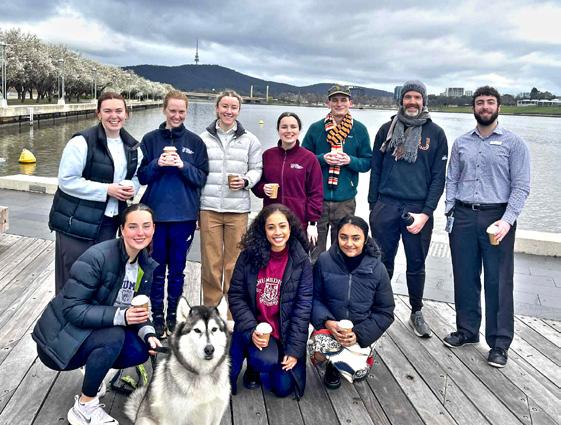



Over 750 clinicians, researchers and medical leaders from Australia and internationally met in Canberra in early October for the Australian Society of Anaesthetists’ National Scientific Congress –the premier event for the anaesthesia profession. This year’s Congress theme was “Come Together”, with the event returning to Canberra after 13 years. Congress convenor Dr Girish Palnitkar, scientific convenor Dr Adam Eslick, and workshop convenor Dr Freya Aaskov rallied an incredible workforce of local ACT, interstate and international consultant anaesthetists, intensivists, trainees and other helpers to put on a world-class program. Participants included AMA ACT President Dr Kerrie Aust and PSR Director Dr Antonio Di Dio.




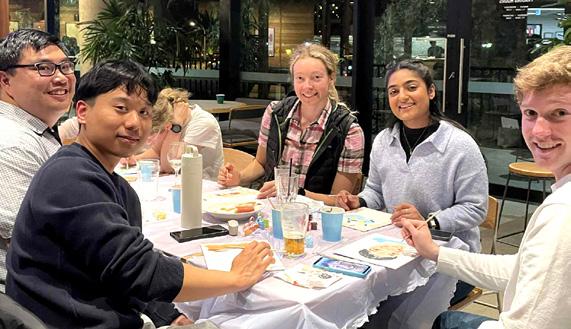
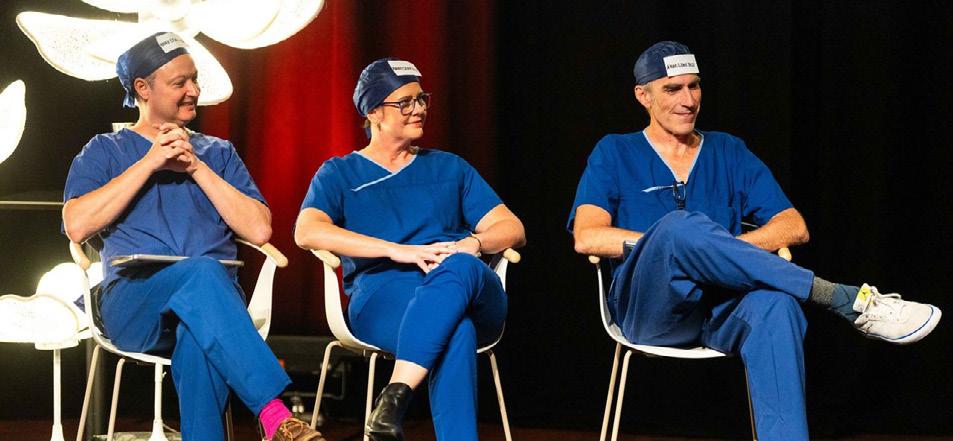

AMA ACT President and AMA Federal Councillor
Dr Kerrie Aust joined a powerful coalition of voices at Parliament House on Thursday, 28 August, calling on the Federal Government to act on long-standing recommendations to ban gambling advertising and address gambling harm.
The roundtable, convened by Senator David Pocock, brought together experts, advocates, and people with lived experience — including Australian cricketer Usman Khawaja — to highlight the urgent need for reform. The event follows the landmark 2023 parliamentary inquiry led by the late Peta Murphy, which delivered 31 unanimous recommendations, including treating gambling as a public health issue and banning gambling ads
during sports broadcasts.
Dr Aust reinforced the AMA’s position, stating: “We want kids and young people playing sport and having their heroes without a constant stream of gambling advertising.” She also emphasised the health harms of gambling, including its links to mental illness, substance use, family breakdown, and financial distress.
The AMA has long advocated for stronger regulation, including the establishment of an independent gambling regulator and tighter controls on advertising and inducements targeting children. Despite these calls and the inquiry’s findings, the government has yet to respond — prompting renewed pressure from health professionals and community leaders.
The roundtable aimed to build parliamentary understanding and momentum for reform.
Dr Aust’s message was clear: gambling harm is a health issue, and the time for action is now.
The Australian Centre for Health Care Research (Queensland University of Technology) are inviting medical practitioners, regardless of whether they provide (or will provide) VAD, to take part in a one-off interview.
Interviews will be conducted via Zoom (or phone, if preferred) and are expected to take 4560 minutes. Interviews will be audio and video (if applicable) recorded. Interviews aim to gain participants’ insights into whether people living with dementia should be able to access VAD and a
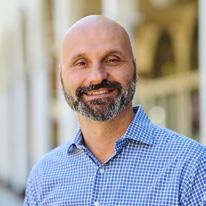
NESH NIKOLIC Strategic Psychology
Roughly 5% of students are what we call ‘gifted’ – those with exceptional intellectual, creative, or artistic abilities. And yet, giftedness can be hard to spot, often masked by behaviours that mimic other concerns.
In a recent Better Thinking podcast episode, I spoke with Professor Jae Jung, a leading Australian researcher in gifted education. His insights are particularly relevant to GPs, who are uniquely placed to identify and support gifted children.

possible framework that would allow this to occur safely.
This study has been approved by QUT’s Human Ethics Committee: 9354
More information about this study can be found here: https://research.qut.edu. au/vad-and-dementia/
If you are interested in participating or would like to hear more about the study, please contact Casey Haining, casey.haining@qut.edu.au
When gifted kids struggle: What you might be seeing

Jae explained that “giftedness is not just about high IQ – it’s about potential that needs to be nurtured.” He highlighted asynchronous development, where a child’s cognitive abilities outpace their emotional maturity. This mismatch can lead to behaviours mistaken for defiance, anxiety, or even somatic issues. For example, the child who reads well beyond their age but disrupts class, or the teen with sharp reasoning paired with intense emotional reactions.
Without appropriate challenges, these children can become disengaged, underachieve, or develop mental health issues. “If we don’t provide the right environment, these kids can become frustrated, anxious, or even depressed,” Jae told me. Complaints of boredom with schoolwork or recurring
physical symptoms like stomach aches tied to classroom stress could be clues. Asking openended questions such as “Does your child seem unusually curious or intense?” or “Have teachers noticed anything unique about their learning?” can help uncover patterns. Traits like perfectionism, rapid learning, or heightened sensitivity often point to giftedness. It’s important to note that giftedness can also coexist with conditions like ADHD or autism, known as ‘twice-exceptional’ profiles. These children might excel in one area but struggle in others, which can obscure their giftedness. For instance, a child with ADHD might be brilliant at problem-solving but struggle with focus, leading to misdiagnosis or overlooked potential.
Formal tools like the Gifted Rating Scales or IQ testing (via psychologist referral) can confirm suspicions of giftedness, but a GP’s clinical observations are vital for early identification. By noticing the subtle signs, GPs can help families connect with the right support to foster a child’s academic, social, and emotional growth.
How can we best support these children? A frequent question is whether grade-skipping is helpful. While advancing a grade can enhance academic growth for some gifted children, their
Dr Marisa Magiros sends a Shout Out to UCMC (University of Canberra Medical Centre) psychiatrist Dr Virginia McAndrew for "helping our team manage the complex psychiatric care of vulnerable university students".
emotional and social maturity requires careful assessment by parents, teachers, and educational psychologists due to asynchronous development. If a child lacks the maturity to cope, grade-skipping can be detrimental, potentially leading to social isolation among older peers or increased emotional pressure from higher expectations. Collaboration among these key individuals is essential to ensure the child is ready to thrive in an older peer group. If skipping grades isn’t appropriate, alternatives like enrichment programs, which provide advanced material within the child’s current grade, or differentiated learning tailored to their pace, can keep them engaged. Extracurricular activities such as music, coding clubs, or STEM workshops can also offer outlets for their abilities.
Gifted children’s needs are often misunderstood, but GPs can be pivotal in identifying early signs and guiding families. By asking targeted questions, observing subtle cues, and facilitating referrals to educational psychologists or school-based support, GPs can help ensure these children receive the tailored opportunities they need to thrive academically, socially, and emotionally.
Better Thinking is available on Apple Podcasts, Spotify and YouTube or at neshnikolic.com/podcast
Know a colleague who has done something great?
Let us know at editorial@ama-act.com.au and we’ll include your Shout Out in our next edition.
News Magazine for all Doctors in the Canberra Region
ISSN 13118X25
All electoral matter in this edition of Canberra Doctor is authorised by Peter Somerville on behalf of the Australian Medical Association (ACT) Ltd.
Published by the Australian Medical Association ACT Ltd
Level 1, 39 Brisbane Ave, Barton ACT 2600 (PO Box 560, Curtin ACT 2605)
Editorial Sarah Colyer sarah-colyer@ama-act.com.au
Design Juliette Dudley reception@ama-act.com.au
Advertising Ph 6270 5410 Fax 6273 0455 reception@ama-act.com.au
Canberra Doctor welcomes reader contributions. Submit your stories or letters to editorial@ama-act.com.au
The
Sterile surgical linen is taken for granted in a place like Canberra, but in the Solomon Islands, a shortage of this basic item recently caused surgeries to be cancelled. Now, through a series of fortunate events and the generosity of some exceptional Canberrans, the island nation has enough surgical linen to supply it for many years to come.
At the beginning of this year, obstetrician gynaecologist Dr Liz Gallagher, a former AMA ACT president, was planning for her annual teaching visit to the Solomon Islands, when she heard from a colleague in Honiara about the shortage of linen. “Their supplies had become threadbare and unusable, and so they were having to cancel surgeries,” she said.
“It got me wondering what had happened to all the surgical linen that was decommissioned when The Canberra Hospital’s new operating theatres opened in 2024, and they moved to disposable linen.”
It took a few phone calls, but Dr Gallagher tracked the old linen down – mountains of the stuff, in good condition, stockpiled in huge tubs at Capital Linen Service in Mitchell.
“As it turns out, Capital
Linen were wondering what to do with it all, as it was going to be expensive to dispose of,” she says.
Getting the linen to the Solomon Islands was also not going to be cheap – around $15,000 for the container.
Dr Gallagher was considering who she might ask to sponsor the shipment, when she had a fortuitous conversation at the AMA ACT Annual General Meeting in May with AMA ACT treasurer, Dr Jason Gluch, who is CEO of Capital Pathology.
“I got talking with Jason, and he said Capital Pathology might be able to help,” Dr Gallagher said. As it turned out, Capital Pathology agreed to cover the whole cost of the shipment. “They have been extremely generous,” Dr Gallagher said. There were a few more hurdles to cross to make it all happen.
Dr Gallagher contacted the CEO of Honiara’s central hospital, who confirmed there was a weatherproof facility to store the shipment. “They were extremely grateful,” Dr Gallagher said.
Capital Linen Service staff then spent a busy couple of weeks folding and sorting the linen into 17 pallets, each around 2m x 2m. “It was a tremendous effort on their part,” Dr Gallagher said.
Dr Gallagher said special thanks also goes to the John James Foundation, who has sponsored her team’s clinical teaching visits to the Solomon Island for many years, and to the Rotary Club of Canberra, who assisted with transport for the shipment.
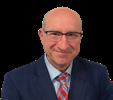
your brain
See answers on page 10

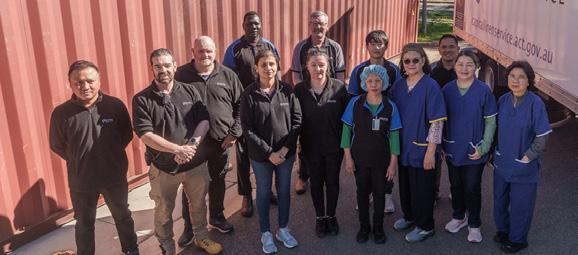
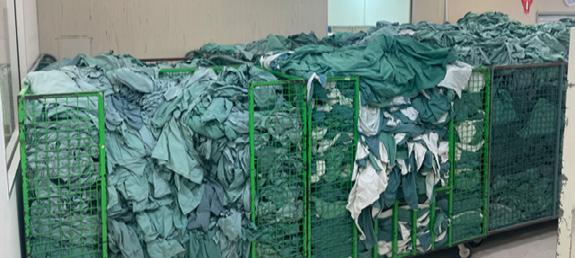
The container left Canberra, bound for Honiara, in early October.
Dr Gallagher said it was her privilege to be involved in capacitybuilding in the Solomon Islands.
“It’s really good for me to be able to teach and mentor, not just in Australia, but overseas, in lowresource settings,” she said. “The needs in a place like the Solomon Islands are inexhaustible.”
Dr Gluch said Capital Pathology were proud to support Dr Gallagher and her team in this worthy cause.
1. How many legs does a centipede have?
2. Wonderful kids’ books were written by Theo LeSieg, also known as which doctor?
3. Who wrote “It was the best of times, it was the worst of times”?
4. Batman’s villain who is fuelled by constant rage is called…
5. Who were TAA and Ansett?
6. What did Franklin D Roosevelt and Adolf Hitler both achieve in 1932?
“It is inspiring to see the time and effort, as well as the results they achieve and we are grateful to be able to contribute to their endeavours in a meaningful way,” he said. “I would also like to thank Mr Lindsay Thitchener, Executive Manager of the Sonic Healthcare Foundation, whose experience in providing healthcare solutions to in need community groups overseas and locally, managed the logistics of the shipping container for us.”
7. Which country has Thimphu as its capital?
8. Which US city is known as the Big Easy?
9. Which Australian musical family dominated the Billboard US charts in 1978 with five of the top 10 hit singles?
10. What is the commoner name for the hypophysis? And how much does it weigh in an adult?
MBBS (Hons I) FRACS (Orth) FAOrthA
Ph: 02 6260 5249
katherinegordiev.com.au
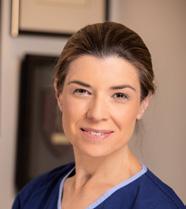
Dr Gordiev has Australian and international fellowship training and specialises in treatment of orthopaedic upper limb conditions, sporting injuries and trauma, including:
• shoulder replacement, repair, reconstruction, stabilisation including Latarjet
• operative shoulder/ upper limb fracture/ dislocation management
• biceps tendon repairs
• arthroscopic and open shoulder and elbow surgery
• cubital and carpal tunnel release
• surgery for arthritis, tendinitis, ganglions and traumatic conditions of the hand and wrist
UNIVERSITY OF CANBERRA MEDICAL & COUNSELLING CENTRE

ABOUT US
The University of Canberra (UC) is deeply connected to our community, driven by a vision to empower, connect and share knowledge. Our Medical and Counselling Centre plays a vital role in supporting the health and wellbeing of students, staff, and the broader community.
ABOUT THE ROLE
• Lead a high-impact health service within a vibrant university community
• Great benefits, negotiable senior management salary (plus 17% Super)
• Full Time, 5-years Fixed Term Opportunity
Stay abreast of sector trends to position UC as a wellbeing leader
Contribute to university-wide health and wellbeing strategies
Maintain clinical practice to support continuity of care
Lead major health-related projects and initiatives
HOW TO APPLY
We are seeking a strategic and experienced clinical leader to join our executive team as Director, Medical & Counselling. Reporting to the Deputy Vice-Chancellor, this role leads the Centre’s strategic direction, governance, and operational excellence. You’ll advise senior leadership on health policy, risk, and wellbeing initiatives, while fostering a collaborative and inclusive environment.
KEY RESPONSIBILITIES INCLUDE
Lead and mentor a multidisciplinary clinical team
Ensure high-quality, integrated health services for students and staff
Advise on emerging health issues, risks, and policy development
Respond to critical incidents with professionalism and agility





Dr Sasikala Selvadurai
FRACP; Dip Palliative Medicine (Clinical)
• Comprehensive Geriatric Assessments Cognitive & Capacity Assessments Falls Prevention Measures, Movements Disorders (Parkinson’s Disease)
• Medications Profile Optimisation and Goals of Care decisions Committed to elderly wellbeing and healthy ageing with a focus on


Submit your CV and a cover letter outlining your suitability for the role. Please align your application with the Position Description. UC encourages applications from Aboriginal and Torres Strait Islander peoples, people with disability and people from culturally and linguistically diverse backgrounds.
For full Position Description and eligibility details visit: uctalent.canberra.edu.au/ cw/en/job/503351/directormedical-counselling
CONTACT
For role-specific queries: Prof. Michelle Lincoln, Deputy ViceChancellor – DVC@canberra.edu.au
For recruitment questions: Sandy Demeester-Pohl, Talent Solutions Manager – 02 6201 2133 or sandy.demeesterpohl@canberra.edu.au
Closing date: 11.55pm, Sunday 16 November 2025
• Wellbeing support services
• Career consultations







•
•
• Telehealth Consultations available

• Subscription to Medical Journal of Australia
• Discounted subscriptions: CPD Home, Therapeutic Guidelines, UpToDate

Owning a home, starting a practice, retiring early. Every big goal needs more than good intentions. It needs a strategy. The right plan changes everything.
We help doctors:
Grow and protect wealth through smart, tax-effective strategies
Navigate big life decisions, from buying property to practice succession
Plan for financial independence and secure retirement outcomes
Maximise superannuation and investment opportunities
Align your finances with the life you want
You’ll get more than a financial plan. You’ll get a dedicated advisor who understands the medical profession, your time pressures, and your long-term goals.
Start Your Financial Freedom Journey Today.
Speak to one of our trusted advisors >

